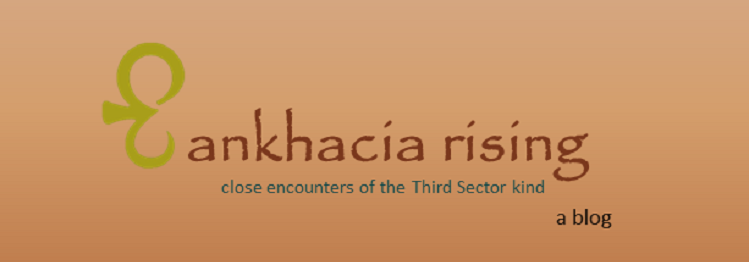Build a bridge to capacity with this formula
/$70,000. That’s what my ED told me was needed to fill an unexpected funding gap—three months before the end of the fiscal year. How on earth were we going to raise that kind of money so quickly? Whatever remaining grant proposal awards we were waiting to hear about certainly wouldn’t cover that, should we get them. I did have one more newsletter mailing to send out. But with the likely response percentage, it wasn’t like it would make much of an impact.
It was the year we’d expanded our programs three-fold and so went the budget as well. With a gap that big, it should have been anticipated. But why wasn’t it? And what are we going to do now?
As an organization, we responded to the shortfall by asking board members to pitch in even more than many of them had already. I also sent some letters to a few donors who hadn’t given yet, explaining our situation and asking for their help. Scary and embarrassing.
There was probably a good reason the organization was caught unaware. Thing is, I couldn’t say for sure what it was because I was never included in budgeting conversations. Not long before that I’d been at another organization that found itself in similar straits but in that case our government funder told us about it 18 months in advance, giving us enough time to strategize and implement a response.
Thing is, stuff happens and when it does it often leaves nonprofits on the brink of something—and it’s often a fall, not a rise. The ability to respond from a position of strength usually lies with how much financial hemorrhaging can be slowed or at least contained. This is dependent upon the types of scenarios it can reasonably plan for, the resources it has in place to mitigate losses and strategies it can employ to secure itself once disaster has been averted.
Crisis fundraising is the standard practice deployed in response to so-called natural disaster emergencies while crisis fundraising is often the preferred practice employed in response to the daily life urgencies facing nonprofits themselves.
Using this as a mode of business is devastating for your constituents and your community. They expect that your organization has asked the questions, anticipated the situations and created the strategies that will keep the doors open and your services going under most any circumstances. They’re having crises of their own. Where is yours going to leave them?
Grantspace.org defines nonprofit capacity building as a “broad term that encompasses ‘actions that improve nonprofit effectiveness’, in terms of organizational and financial stability, program quality, and growth.” In its application to nonprofit resource development and fundraising, it promotes the notion that the third sector must proactively secure its financial sustainability. The status quo of passively accepting what comes its way in the form of charity, gives way to self-determining actions that chart a course of longevity and empowerment.
Admittedly, I’ve spent much of my career in organizations that seemed always to be playing financial beat-the-clock; and a couple were straight up out of time. In my opinion, that’s clearly fostered from a culture that practices just-in-time fundraising based on a charity mindset. It’s a belief that organizations, especially grassroots community initiatives, don’t deserve more.
I never really understood this, much less accepted it. As standard-bearers of civil society, nonprofit organizations of every ilk should always seek to exemplify the very best in and of humanity. They fill the gaps between what business and government can, and in some cases won’t do. Settling for subpar outcomes in any area is unconscionable.
No, there is no room for scarcity mindsets of any kind when you’re busy saving the world. Nonprofit organizations were created to span gulfs by building bridges. That can only happen by elevating to a kind of stakeholder engagement that presents opportunities to invest in transformational philanthropy, not debilitating charity.
Don’t think your organization can move to philanthropy from charity? I’d bet you’re wrong.
Find at least ten to 15 people your organization can invite to a one-hour gathering. Give them some impressive facts and dispel some myths about your organization or field of work. Let them hear compelling stories from your clients on the impact your programs are having on their lives. Then ask for their feedback on what they saw and heard and meaningfully engage them over the next several months in activities that help them deepen their understanding and commitment to your work.
That is the formula for building a stakeholder engagement process that can exponentially expand your fans and your fundraising—that is transformational philanthropy.
You see, research already shows that upwards of 80 percent of people who volunteer are donors, even if the organization at which they volunteer isn’t the same one to which they donate. The point is they give, time or money or both, because they are engaged in some meaningful, deeply satisfying way, with the organization’s mission. Their commitment to this mission is appreciated and likely in some way recognized.
The capacity of your organization to elevate its expectations of its volunteers, staff, board and donors beyond mere supporters to investors, expands the level of engagement and results in exponential rewards that ultimately sustain the organization through good times and bad.
Your nonprofit does have the capacity to build bridges to philanthropy as well as any other gulf that needs spanning. Are you ready to talk with your stakeholders and start architecting those plans?

